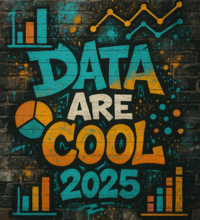Effective Customer Feedback
Updated: 08 Nov 2024
The British Library is currently running an exhibition about 'Beautiful Science' - which explores the importance of being able to communicate effective, and how data visualisation has helped to convey scientific and medical information.
See http://www.bl.uk/whatson/exhibitions/beautiful-science/index.html
I've written and talked in the past on data visualisation, and now seemed like a good time to pick up the thread once more.
The image above was constructed by William Farr in 1852 and shows the impact of Cholera. What makes this so beautiful to me, is that not only is it aethetically pleasing it also told communicated the underlying data in a way that was far more effective that the equivalent tabluar format. And 'effective' in this context means that peopls lifes could be saved as the spread of the disease could be more readily understood.
Whilst I cannot claim any laudable goals, i still aspire to the same principles of ensureing that data are communicated in an effective manner. I have come across far too many people in the digital space, that become consumed by data and think that reporting it is the end goal.
It isn't.
Data are a means to an end, and that end should be fixing a problem - be that business or medical.
The art of storytelling is something that I beleieve everyone involved in communication needs to master. Ensuring that the way you communicate is engaging and, most importantly, relatable for your audience is key. The same is true of present data, be that from web analytics, voice of customer, of any other data source. An engaging visualisation or visual narrative can help you to get your point across far more effectively that detailed tables.
And the beauty of this, is that it can actually save you time. Forcing yourself to get to the hub of what you're trying to say by finding a suitable visual prepresenation will typically result in you stripping away the waffle and thus making your point clearer.
So, this is step 1 - be interesting.
Stay tuned for more on data visualisation over the next few months.
So, do you have any data visualisation stories you'd like to share?
Be the first to comment! Add a new comment below...

Add new comment (subject to moderation):
| Full name: |  |
| Email: |  |
| Website: optional |
|
| Article Rating: optional |
|
| Comment: optional |
|
 |
|
| Type the text shown in the image above: | |
|
|


 @analytdata
@analytdata facebook
facebook LinkedIn
LinkedIn